




An overview of the syllabus and teaching and learning resources
Annette Stuart, George Vlachonikolis, Julia Fusi, Laura Rogers and Jennifer Wade
11 March 2025









Annette Stuart




New syllabus: for first teaching September 2025, with first assessment in March 2027.
Headline changes: Paper 1 increased to 1 hour, Paper 2 decreased to 2 hours; assessed in same way


Syllabus aims: reworded for clarity; new aims of exploring role of economist and inspiring further study
Cambridge Pathway progression: terminology & AO3 Evaluation weighting aligned to build towards AS Level
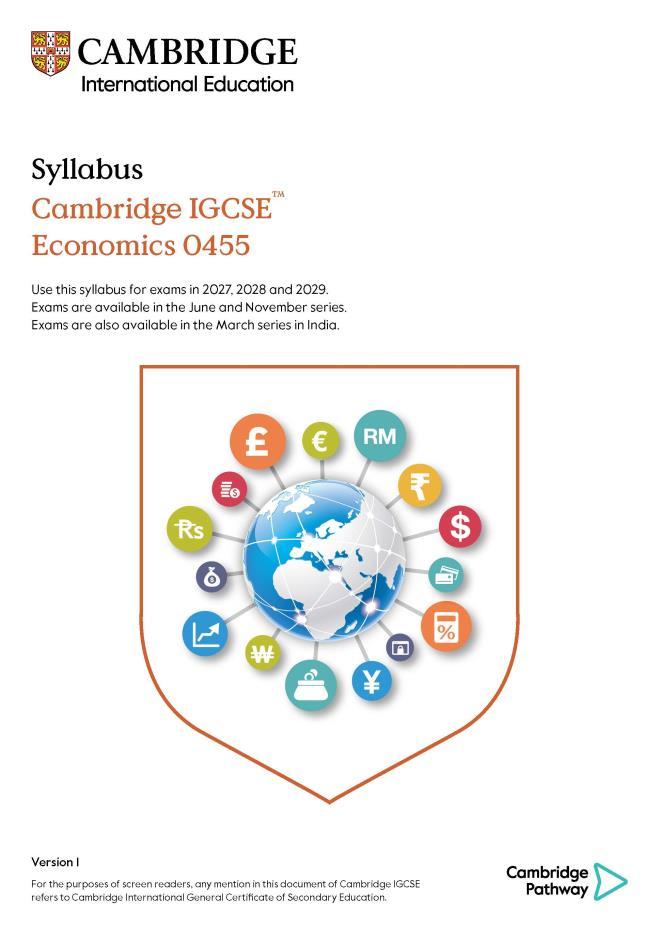


Approx 30% of qualification
Approx 70% of qualification
1 hour 2 hours
40 marks 80 marks
Candidates answer 40 multiplechoice questions. Candidates answer one compulsory question with six parts in Section A, and three questions from a choice of four in Section B. Externally assessed Externally assessed
• Balanced the durations of the two exam components more, so 1 hour and 2 hours.
• Reduced AO3 Evaluation weighting and simplified the AO wording for alignment.
• Updated the subject content, to include themes of environment and sustainability.

Reduced the volume of content slightly, to focus and make space.
Removed or reduced some discrete points of content, e.g.
• taxation principles (old 4.3.5)
• trade unions (still ref. in 3.2.2)
• patterns of employment (4.7.2)
• population pyramids (old 5.3.3)
• fixed exchange rate (old 6.3.1)
Added or made explicit content so up to date and scope is clear.
Some discrete points added, e.g.
• arguments for and against the mixed economy (new 2.10.2)
• diagrams for NMW (min. wage 3.3.2) & ATC (total cost 3.4.3)
• changes in globalisation (new topic 6.2.2)
Content on environment and sustainability now integrated:

Paper 1 Multiple-choice
For Paper 1:
• number of marks/questions increases from 30 to 40
• the exam duration increases from 45 mins to 1 hour.
Same style of questions and similar demand to past papers. The AO balance will still be 50% AO1 : 50% AO2.
Paper 2 Structured questions
For Paper 2:
• number of marks decreases from 90 to 80
• the exam duration decreases from 2 hours 15 mins to 2 hours.
The AOs have been updated to:
• be more concise
• Table A of the Specimen Paper 2 Mark Scheme. -
Same style of questions. Removed a 6-mark ‘Discuss’ and a 4-mark ‘Explain’/‘Analyse’ in Question 1 of Section A.
• align with cognate subjects
• build up AO2 Analysis skills.
What is assessed remains the same. More information is in:
• the Details of assessment section in the syllabus



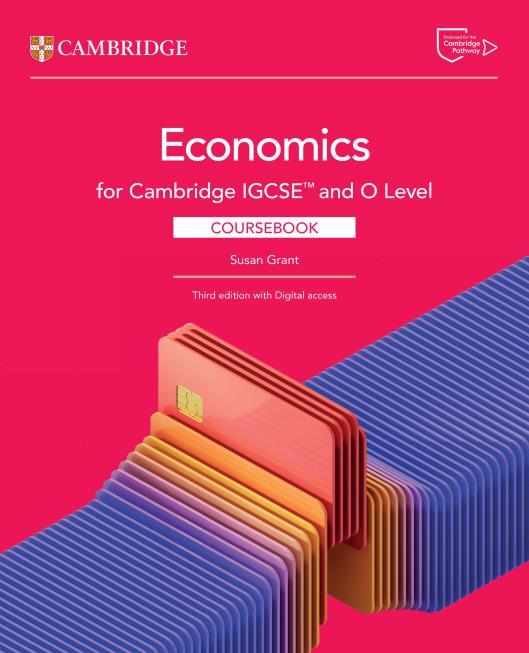

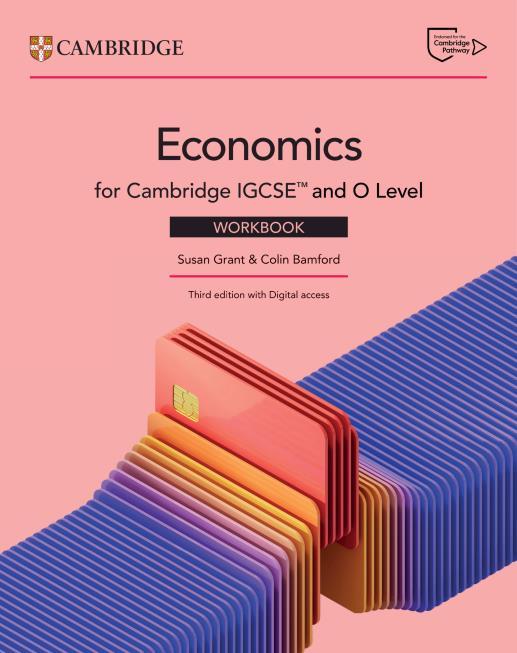

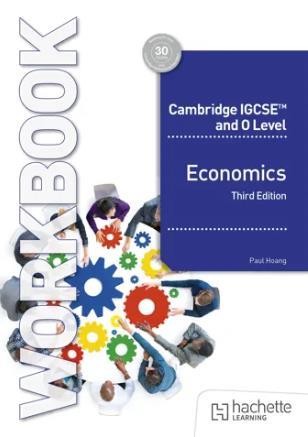



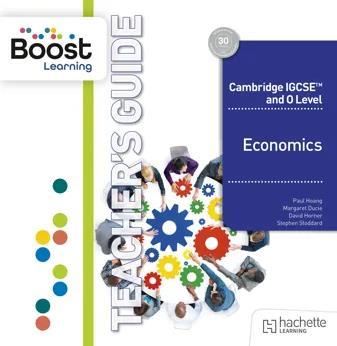



Julia Fusi



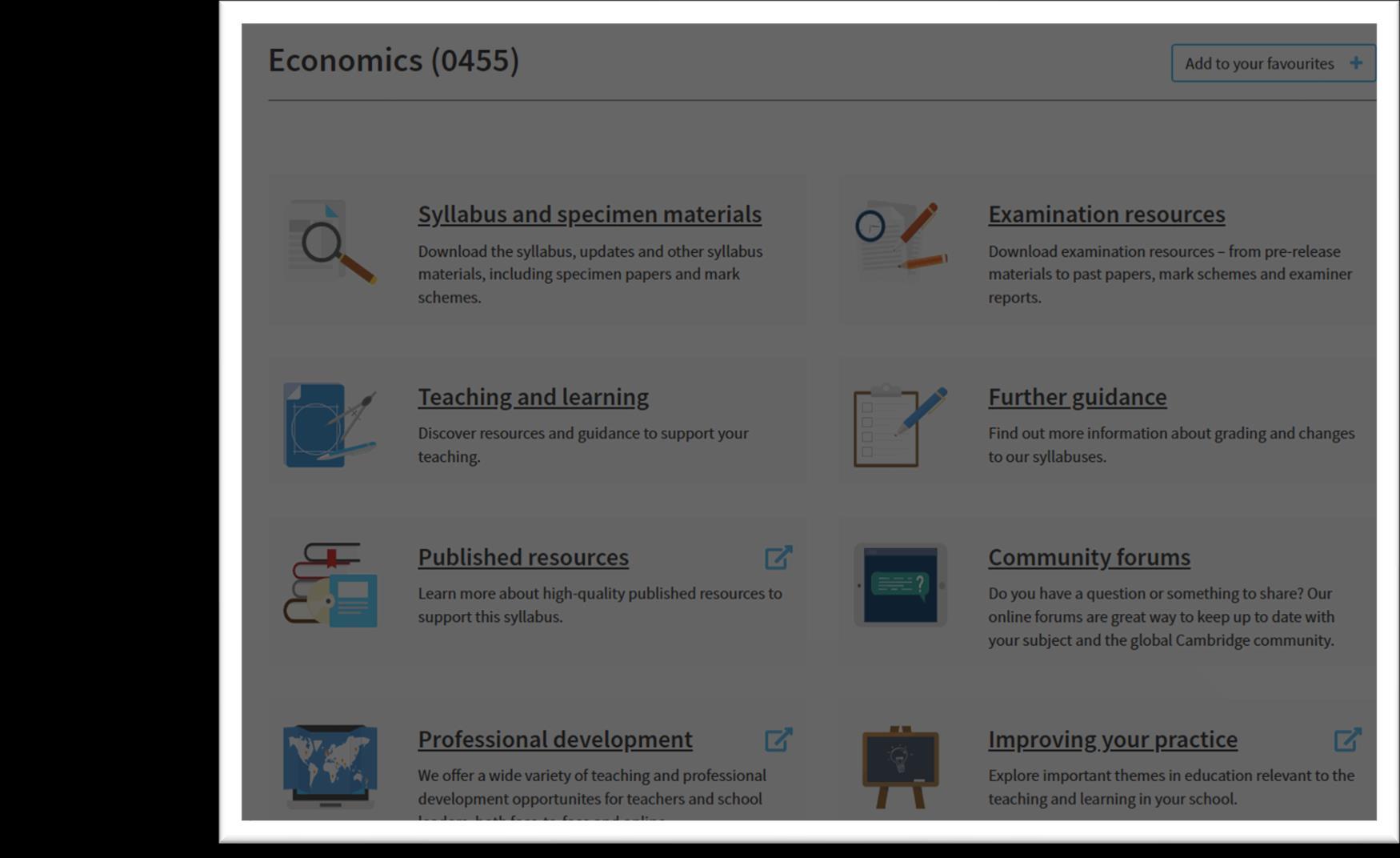
Find more about our professional development and training

Guide to Skills Exercises
Scheme of Work
Teacher Guide
Lesson Planning support
Teaching Tools
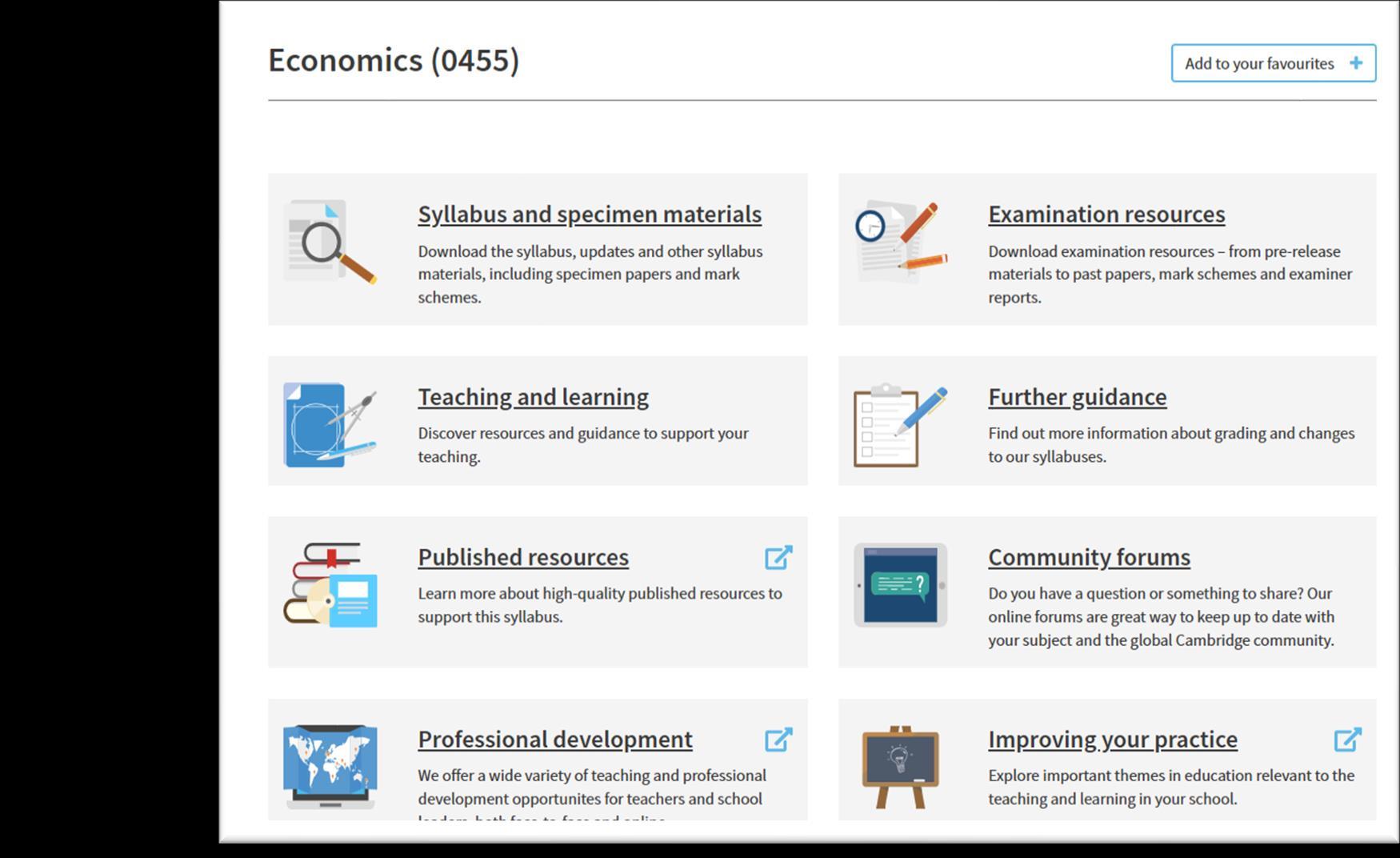
*NEW for 2025* Resource +
Example Candidate Responses Specimen paper answers Past Paper questions Community Forums

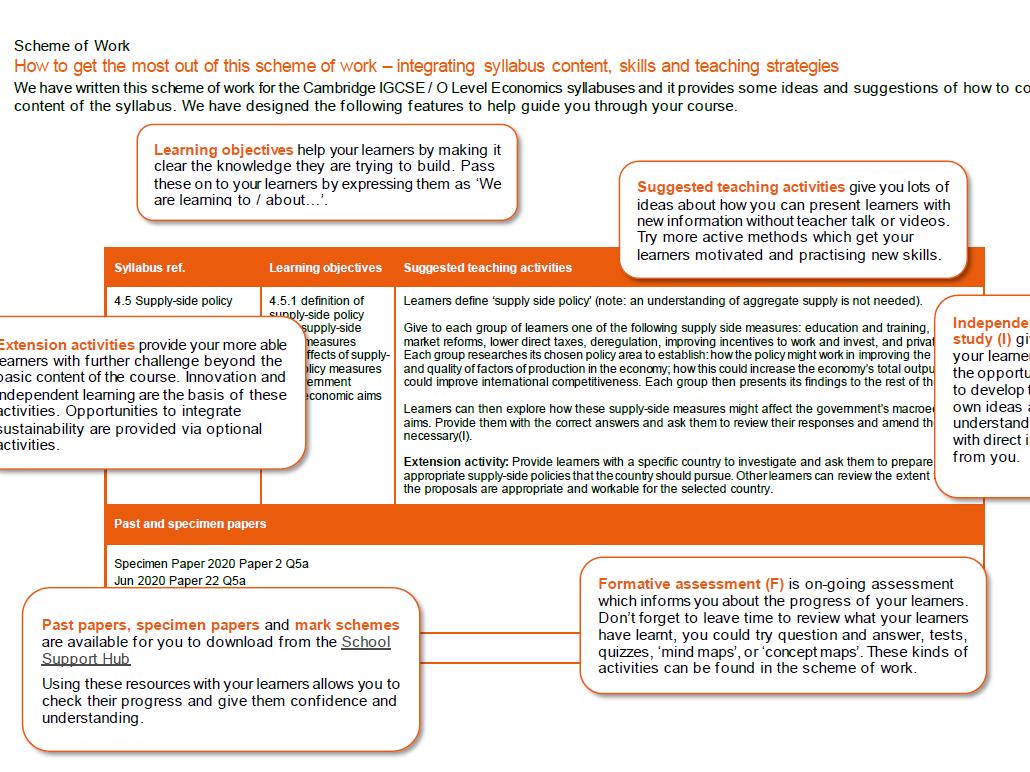

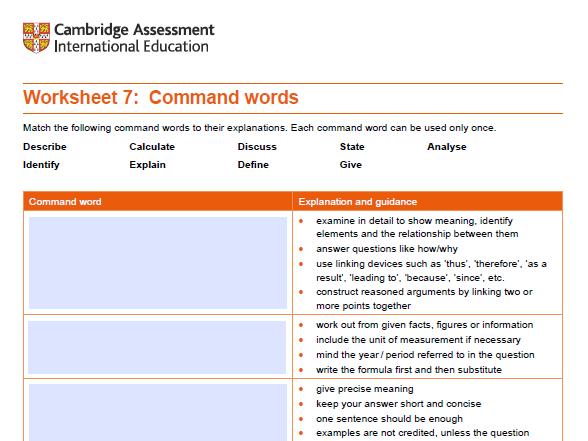





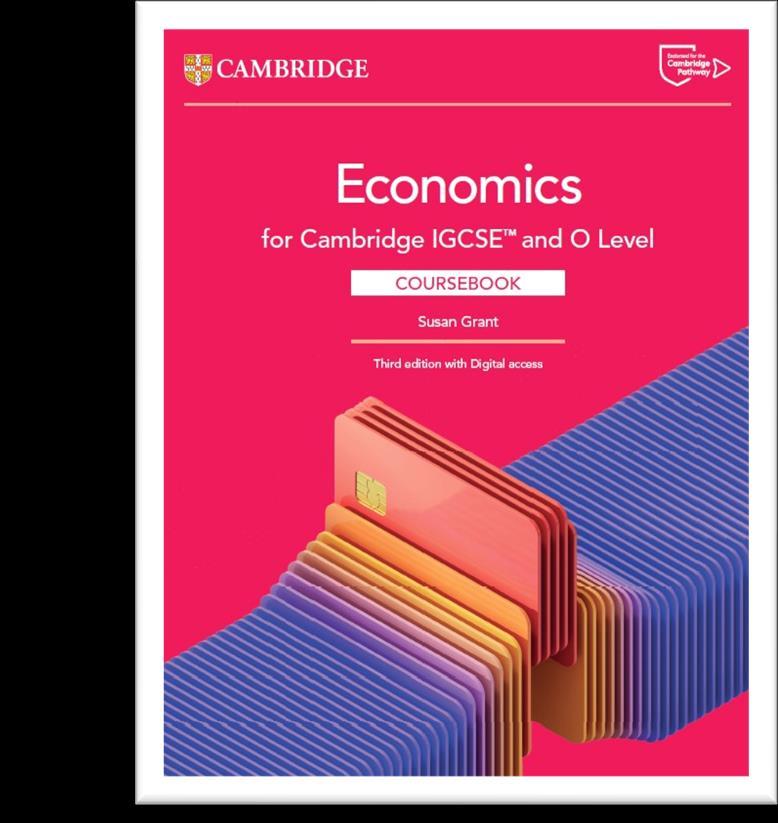
Pub date: 13th March 2025
Susan Grant
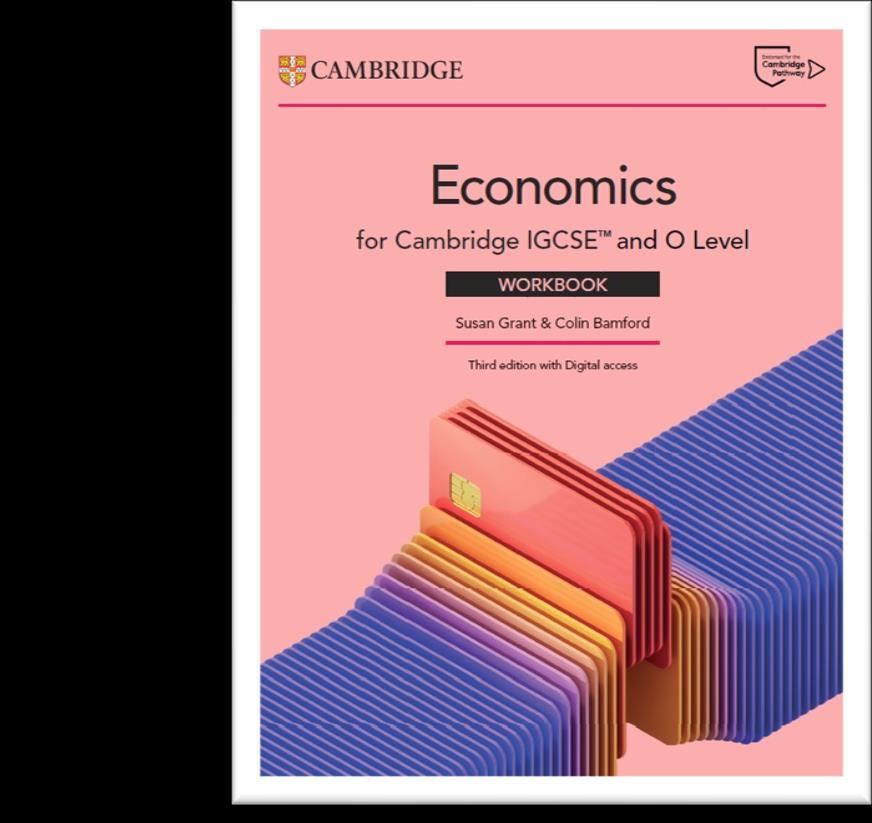
Pub date: 29th May 2025
Susan Grant
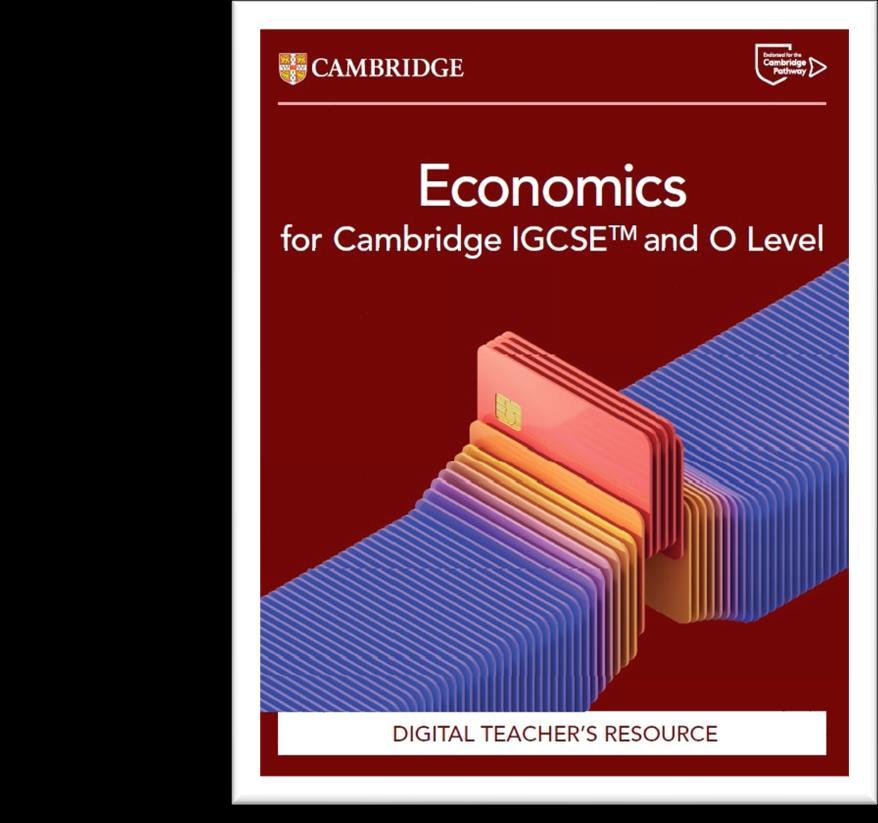
Pub date: 15th May 2025

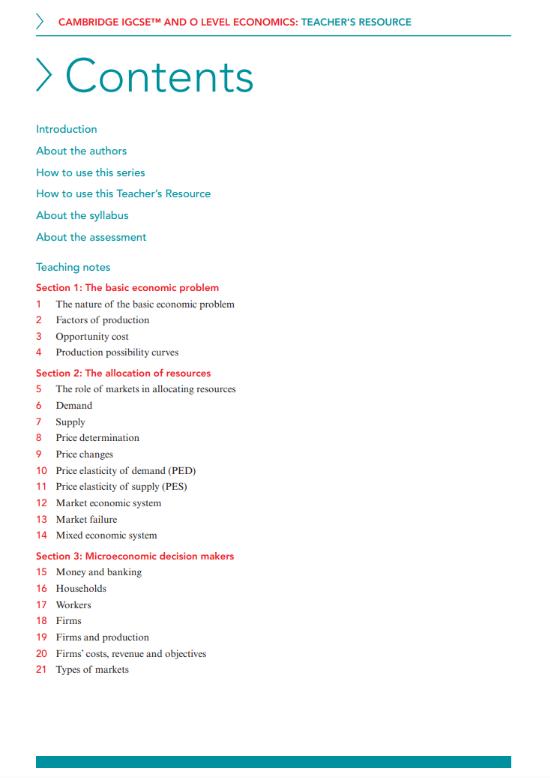


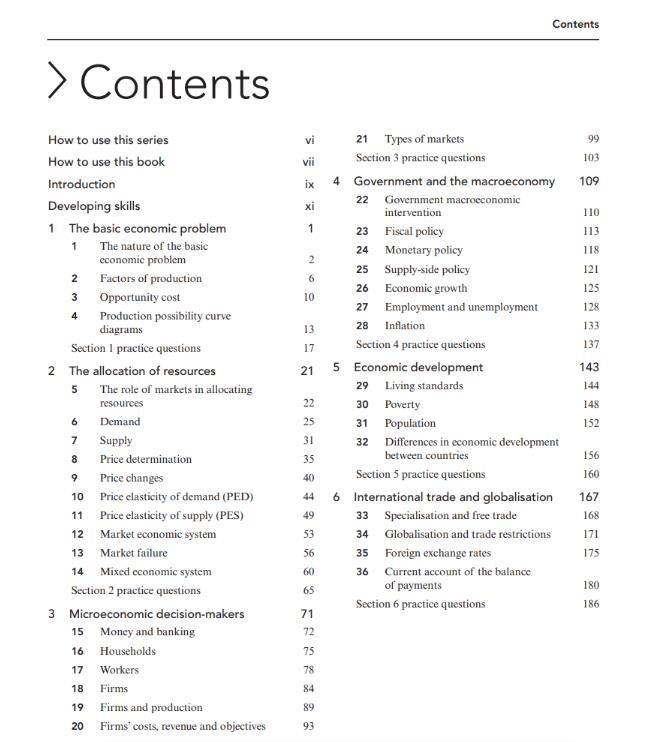





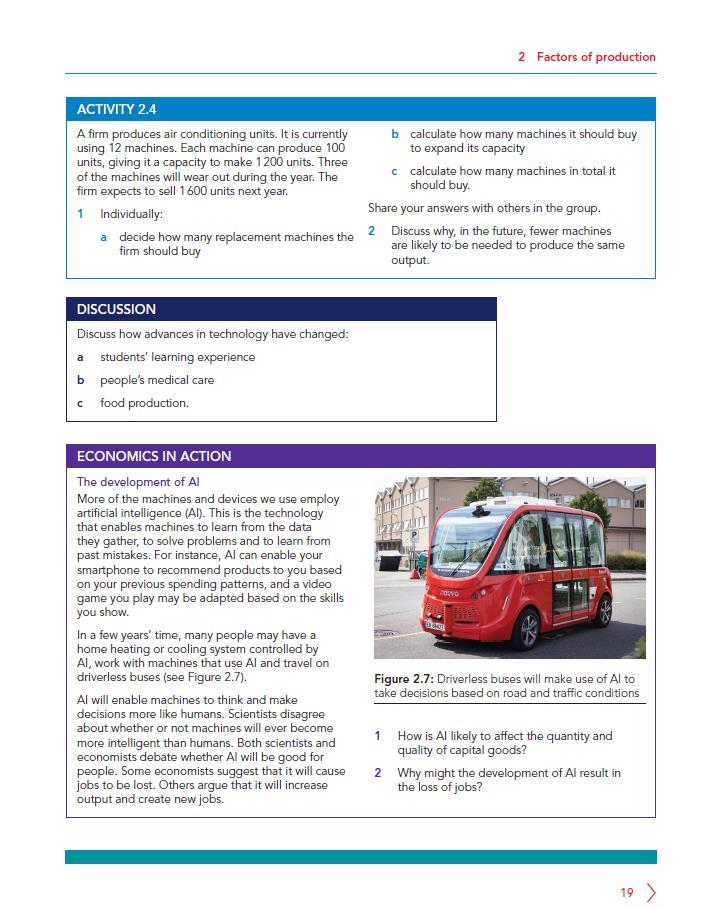
Introduce students to the content in the chapter Contains questions to allow for group discussion
They place some of the key ideas from the chapter into a real-world business setting
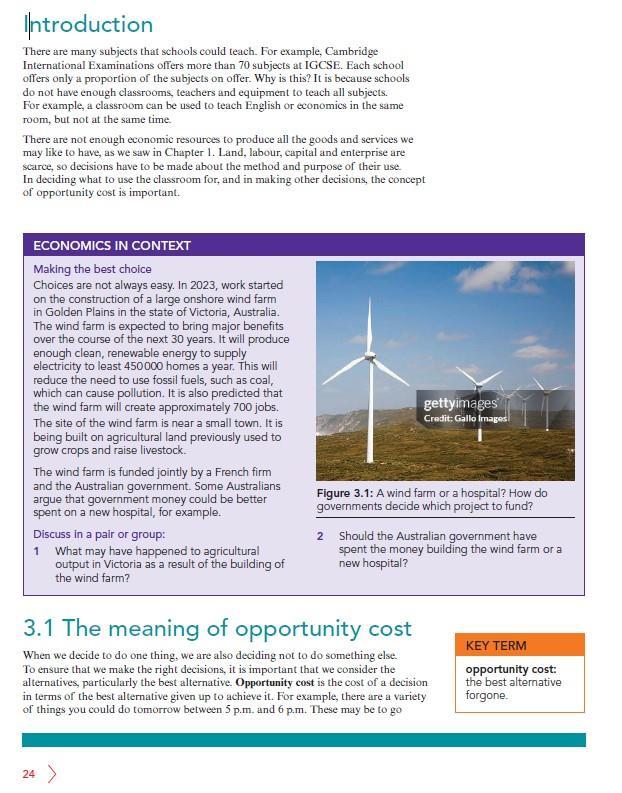


Available in the Digital Coursebook via Cambridge GO Provides additional information and guidance on topics found in the Coursebook


Summarises the topics covered in the chapter
Explains the prior knowledge required to access the chapter and gives suggestions for addressing any gaps in students’ knowledge
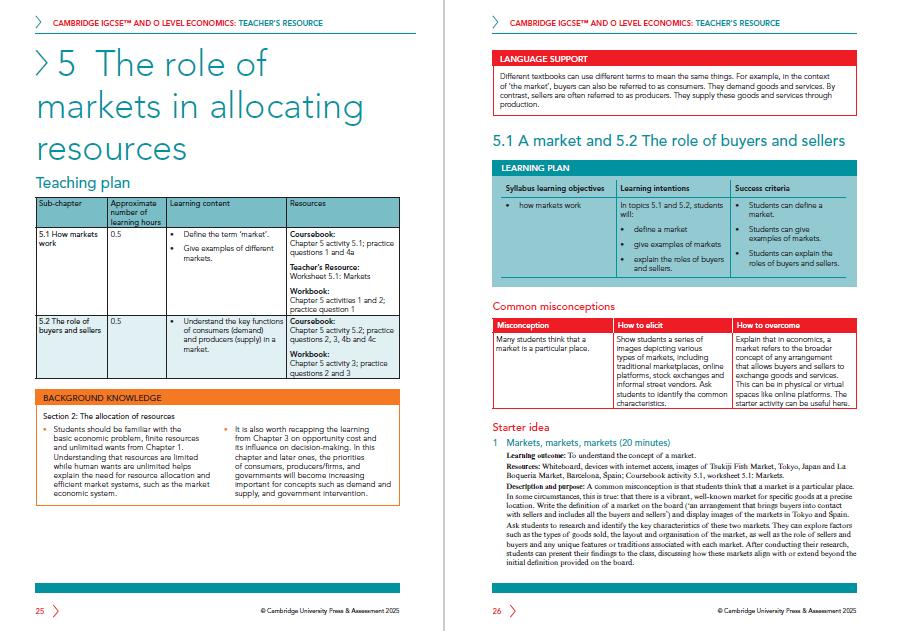

Contains suggestions on how to support students, especially those with English as an Additional Language.
Provides suggestions for eliciting evidence of misconceptions Provides suggestions on how to overcome them

Starter Ideas
Main Teaching Ideas
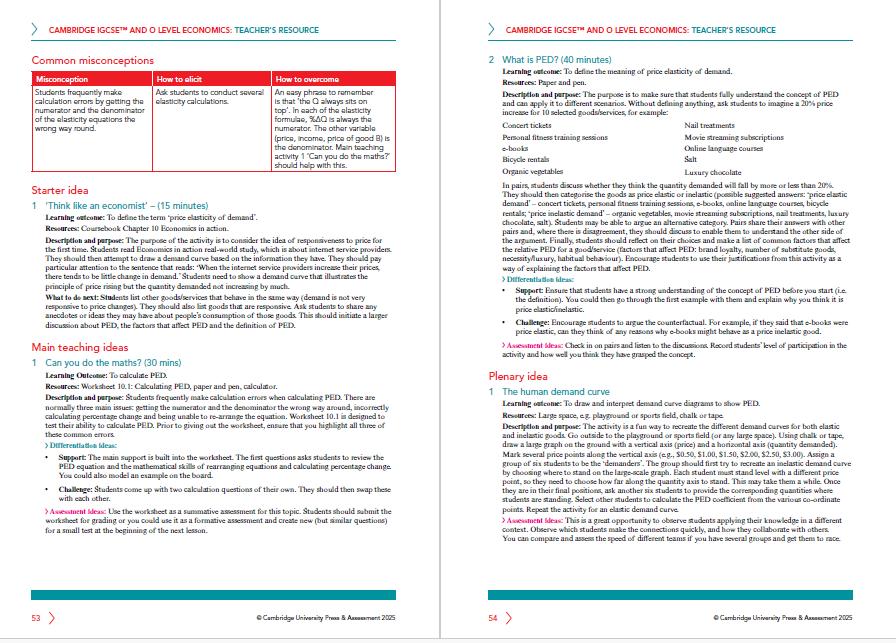

Differentiation support: Support and Challenge
Assessment Ideas



Help students to navigate through the workbook and indicate important concepts for each chapter.

Scaffolded to support progression through the course

Downloadable Worksheet activities



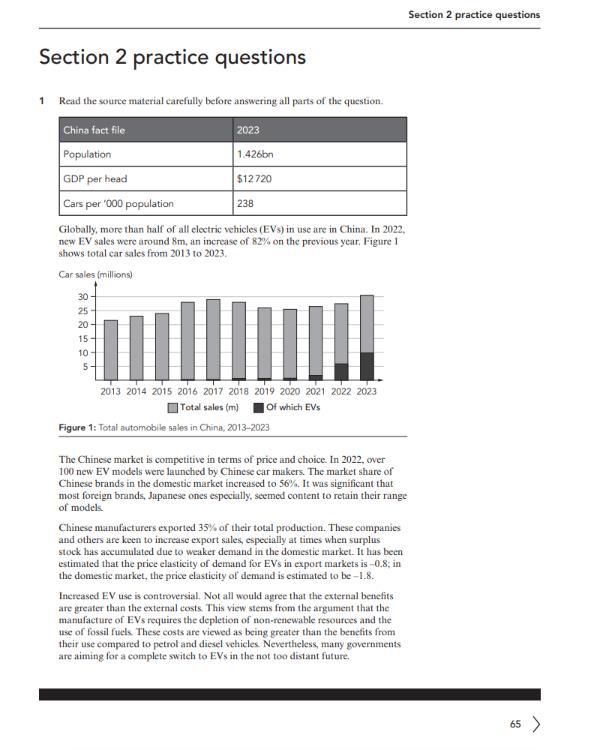

More demanding practice questions provide students with an opportunity to try out further questions on what you have learnt in each section
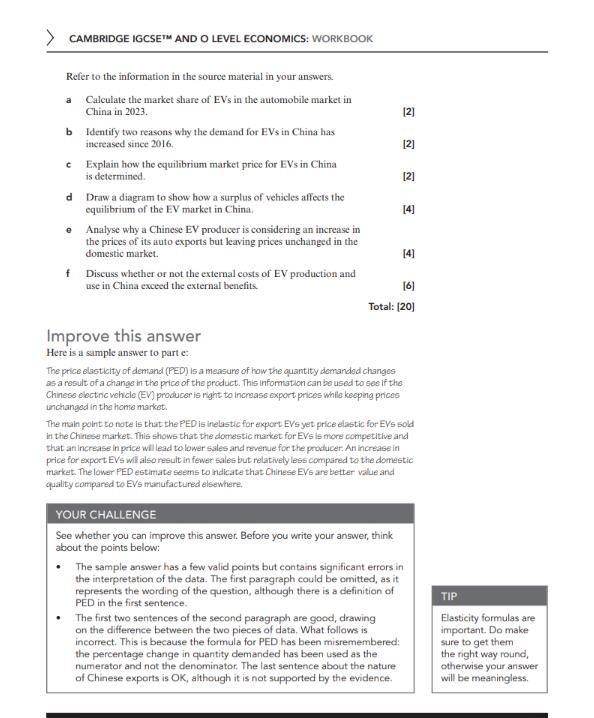
Provide students with a sample answers to help understand how to respond to questions using key skills.

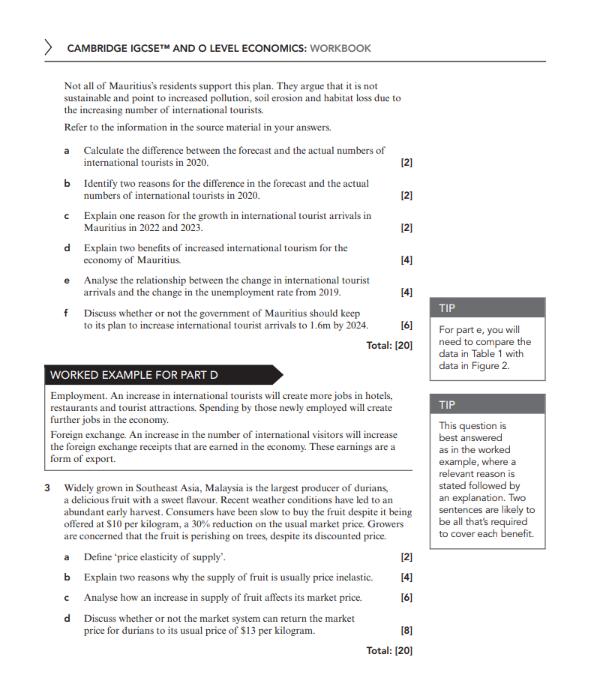
An opportunity to evaluate a sample answer to a question.

Advice and guidance are provided to help you assess the answer.
Opportunity to apply advice for student’s own answer





Introduction courses – Introduce teachers to Cambridge programmes. Recommended for teachers who are new to Cambridge or to a specific qualification.
Marking workshops – Engage with recent candidate responses to build confidence in their understanding of the assessment criteria. Recommended for teachers with at least one year's experience teaching Cambridge programmes.
Focus on Assessment – Engage with our syllabuses in greater depth and build confidence in your delivery.
Recommended for teachers with at least one year's experience teaching Cambridge programmes.
Focus on Teaching – For teachers who want to explore a specific area of teaching and learning within the syllabus. For example, Focus on microeconomics and macroeconomics.


Insights from our author George Vlachonikolis

In this part of the session, we will cover:
• Teaching tips
• Specific ideas


• Teacher
• Head of Department

Assessment
• Cambridge assessment ambassador Economics
• Chair of examiners

• Assistant Head (T&L)
• PGCE lead for Economics


• “We all have a different context”
• “Teachers don’t want to be told what to do, they want ideas”
• You may need to adjust some of the teaching ideas
• You may need to adjust some of the timings
• Encouraging teacher autonomy while maintaining pedagogical integrity


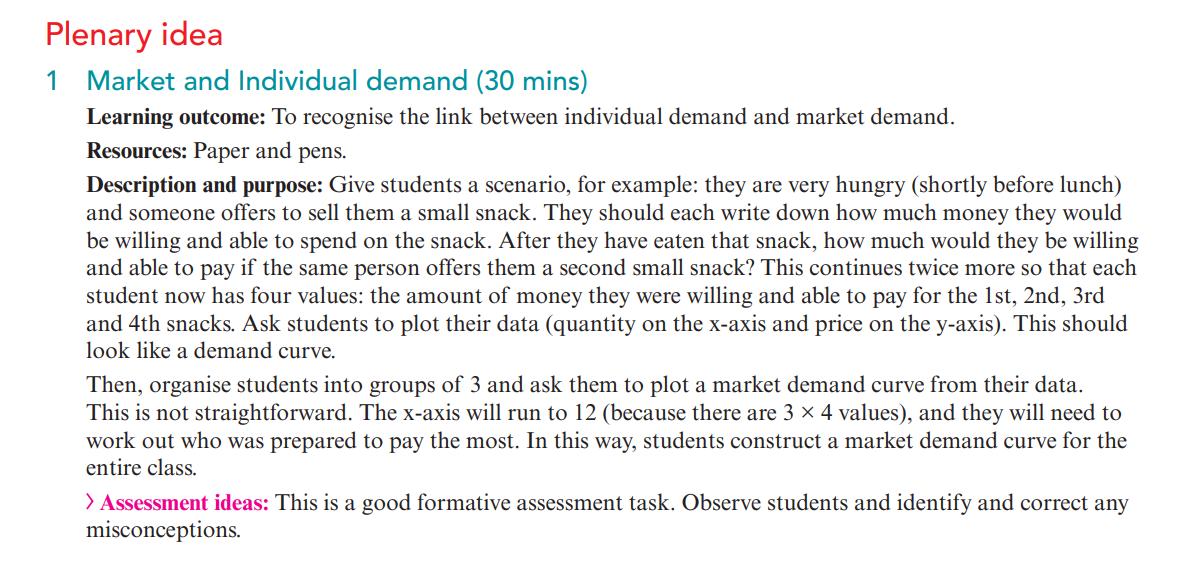


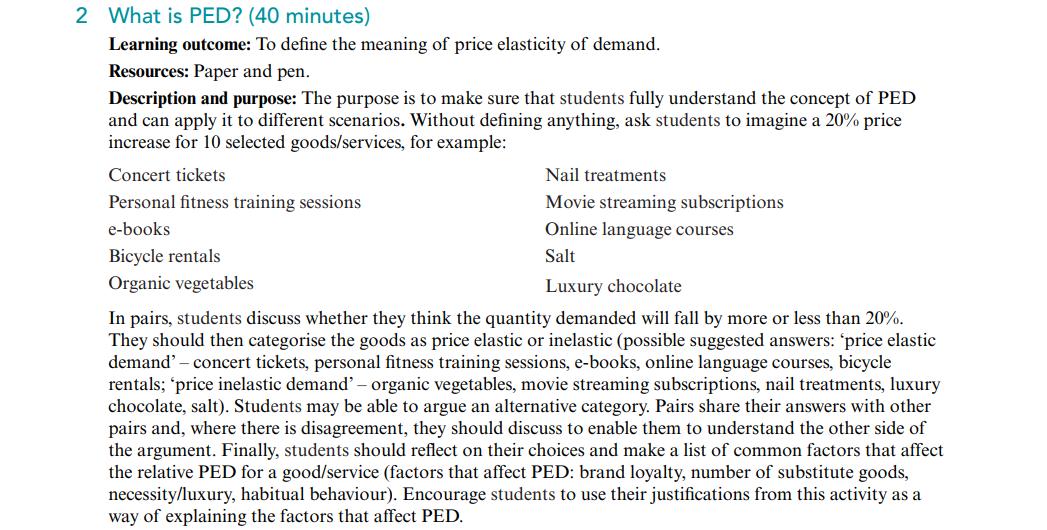










cambridge.org/internationaleducation